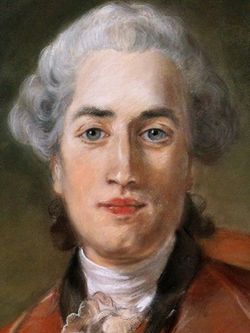
Jean-Georges Noverre (29 April 1727 – 19 October 1810) was a French dancer and ballet master, and is generally considered the creator of ballet d'action, a precursor of the narrative ballets of the 19th century. His birthday is now observed as International Dance Day.
His first professional appearances occurred as a youth in Paris at the Opéra-Comique, at Fontainebleau, in Berlin before Frederick II and his brother Prince Henry of Prussia, in Dresden and Strasburg. In 1747 he moved to Strasbourg, where he remained until 1750 before moving to Lyon. In 1751, he composed his first great work, Les Fêtes Chinoises for Marseilles. The work was revived in Paris in 1754 to great acclaim. In 1755, he was invited by Garrick to London, where he remained for two years.
Between 1758 and 1760 he produced several ballets at Lyon, and published his Lettres sur la danse et les ballets. It is from this period that the revolution in the art of the ballet for which Noverre was responsible can be dated. Prior to Noverre, ballets were large spectacles that focused mainly on elaborate costumes and scenery and not on the physical and emotional expression of the dancers. He was next engaged by Duke Karl Eugen of Württemberg, and later Austrian Empress Maria Theresa, until 1774. In 1776, he was appointed maître des ballets of the Paris Opera at the request of Queen Marie Antoinette. He returned to Vienna in Spring of 1776 to stage ballets there, but in June 1776 he returned again to Paris. He regained this post until the French Revolution reduced him to poverty. He died on 19 October 1810 at Saint-Germain-en-Laye.
Noverre's friends included Voltaire, Mozart, Frederick the Great and David Garrick (who called him "the Shakespeare of the dance"). The ballets of which he was most proud were his La Toilette de Vénus, Les Jalousies du sérail, L'Amour corsaire and Le Jaloux sans rival. Besides the Lettres sur la danse, Noverre wrote Observations sur la construction d'une nouvelle salle de l'Opéra (1781); Lettres sur Garrick écrites à Voltaire (1801); and Lettre à un artiste sur les fêtes publiques (1801).
Source : Wikipedia